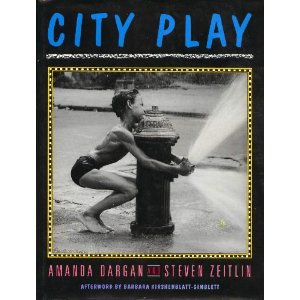“Only two?,” was probably the crack more than a couple of you thought while eyeballing the above title.
Here are two stories, that go a long way towards showing how education is often traveling in more than one direction at any given moment.
The first is about a recent study finding testing to be among the best ways to really learn something: To Really Learn, Quit Studying and Take a Test, by Pam Belluck, New York Times, January 20, 2011
Taking a test is not just a passive mechanism for assessing how much
people know, according to new research. It actually helps people learn,
and it works better than a number of other studying techniques.
Howard Gardner,
an education professor at Harvard who advocates constructivism — the
idea that children should discover their own approach to learning,
emphasizing reasoning over memorization — said in an e-mail that the
results “throw down the gauntlet to those progressive educators, myself
included.”
Okay, that’s one direction, here’s another, framed by two different bits of media.
First, another New York Times article, the gist of which has been covered before in Dewey21C, here and here: Efforts to Restore Children’s Play Gains Momentum, by Hillary Stout, New York Times, January 6, 2011
Too little playtime may seem to rank far down on the list of society’s worries, but the scientists, psychologists,
educators and others who are part of the play movement say that most
of the social and intellectual skills one needs to succeed in life and
work are first developed through childhood play. Children learn to
control their impulses through games like Simon Says, play advocates
believe, and they learn to solve problems, negotiate, think creatively
and work as a team when they dig together in a sandbox or build a fort
with sofa cushions. (The experts define play as a game or activity
initiated and directed by children. So video games don’t count, they
say, except perhaps ones that involve creating something, and neither,
really, do the many educational toys that do things like sing the A B
C’s with the push of a button.)
And here’s a Ted Talk video about the importance of play:
If that seems to be a big claim, consider what the world would be like without play. It’s not just an absence of games or sports. Life without play is a life without books, without movies, art, music, jokes, dramatic stories. Imagine a world with no flirting, no daydreaming, no comedy, no irony. Such a world would be a pretty grim place to live. In a broad sense, play is what lifts people out of the mundane. I sometimes compare play to oxygen–it’s all around us, yet goes mostly unnoticed or unappreciated until it is missing.
I believe, that as in most things reasonable, one would look at this push-pull and come to the conclusion that there is room, and must be room for both. Testing and assessment is important, but are certainly not all there is. Play is important, and cannot be discarded or excluded, even for students in low performing schools.
Unfortunately, the reasonable conclusion is not the norm, and so we fight for time in the school day for music, dance, theater, art, and play of all kinds.
Perhaps even, there’s room for play, in a meeting, and to that end, I present to you my cuff links for today, straight from my iPhone camera:
That’s right, if you look closely, they’re a little maze game, complete with a little ball to maneuver through the maze.
Ask me sometime about my quite vivid skull and crossbones cuff links…
Of course, children and play rises up from right out of our DNA. If you want to read a great book about children’s games in urban areas, check out City Play, by Amanda Dargan and Steve Zeitlin.

The subject of play makes me think back to my own childhood. I grew up at the beach, in Rockaway, NY. For more about Rockaway Beach, consult Mark Knopfler’s Tunnel of Love:
Or everybody’s first choice for Rockaway song: The Ramones’ Rockaway Beach:
Okay, so as a kid, some of the games we inherited were passed along by the ancients, or for as long as there were boardwalks at beaches.
One, a variation of a very old children’s game intended to poke fun at the adults, involved sewing a long piece of thread to a dollar bill (pre-inflation), and from underneath the boardwalk, you would insert the threaded dollar bill up through the boardwalk slats, so it appeared that a dollar was just sitting there, waiting for someone to pick it up while declaring it was their lucky day. And you would watch from below, through the slats, waiting for Mr. or Mrs. Lucky to reach down to grab that rigged dollar bill.
At the same time, a few of your friends would be sitting up top on the boardwalk, on benches and/or on the rails, just hanging out all innocent-like and quiet.
So, as soon as a man or woman would see the dollar, you would see them from below, stop in their tracks, and just as soon as they bent down to grab the dollar, you would either yank it forward, so the person from above would lurch at it, or depending on your skill level, you might simply pull the dollar quickly below the board walk slats, making it disappear as if by magic.
Naturally, all of your buddies would start laughing, and the dollar bill boardwalk trick would have become evident to the victim, who might very well realize they had fallen prey to a game of the ancients. They might laugh, smile, or fume.
There was a variation of the game, played similarly, meaning underneath the boardwalk. This one involved filling an empty sun tan lotion bottle (the term sun screen had probably not yet appeared), with water, so you could squeeze it and shoot a stream of water straight up in the air.
In this variation, with your pals watching just the same, you waited from under the boardwalk, on a nice sunny day for a slow moving adult. It might be a woman wearing a dress, the most highly prized victim, or a man wearing pants, a distant second choice.
And just as they were passing slowly above you, you would shoot the stream of water right up the woman’s skirt, or aim for up the man’s pant leg.
And here’s the funniest thing: the people would almost always look up. But all they would see would be a bright sunny sky.
And then, your pals would start laughing, and depending on the disposition of the victim, your pals, might start running. And, I still remember well, the one of two men who pursued us under the boardwalk. Their revenge was futile, for a grown man could never, ever chase young boys under a boardwalk and expect to catch them.
Though you might be able to imagine the look on the faces of those who tried…





Richard, Your excellent post reminded me of a video I saw on youtube recently from the Fun Theory.
The fun theory, an initiative of Volkswagen, proclaims to be committed to harnessing the power of fun as a means to change people’s behavior for the better.
Take a look at how fun changed people’s escalator habits at a train station in Sweden:
http://www.thefuntheory.com/piano-staircase
What a great blog Richard. Such simple concepts that we’ve forgotten as education reformers, politicians, academics and everyone who has ever been to school in their life opines about this assessment or that subject area. Good for you. AND I love those cuff links!